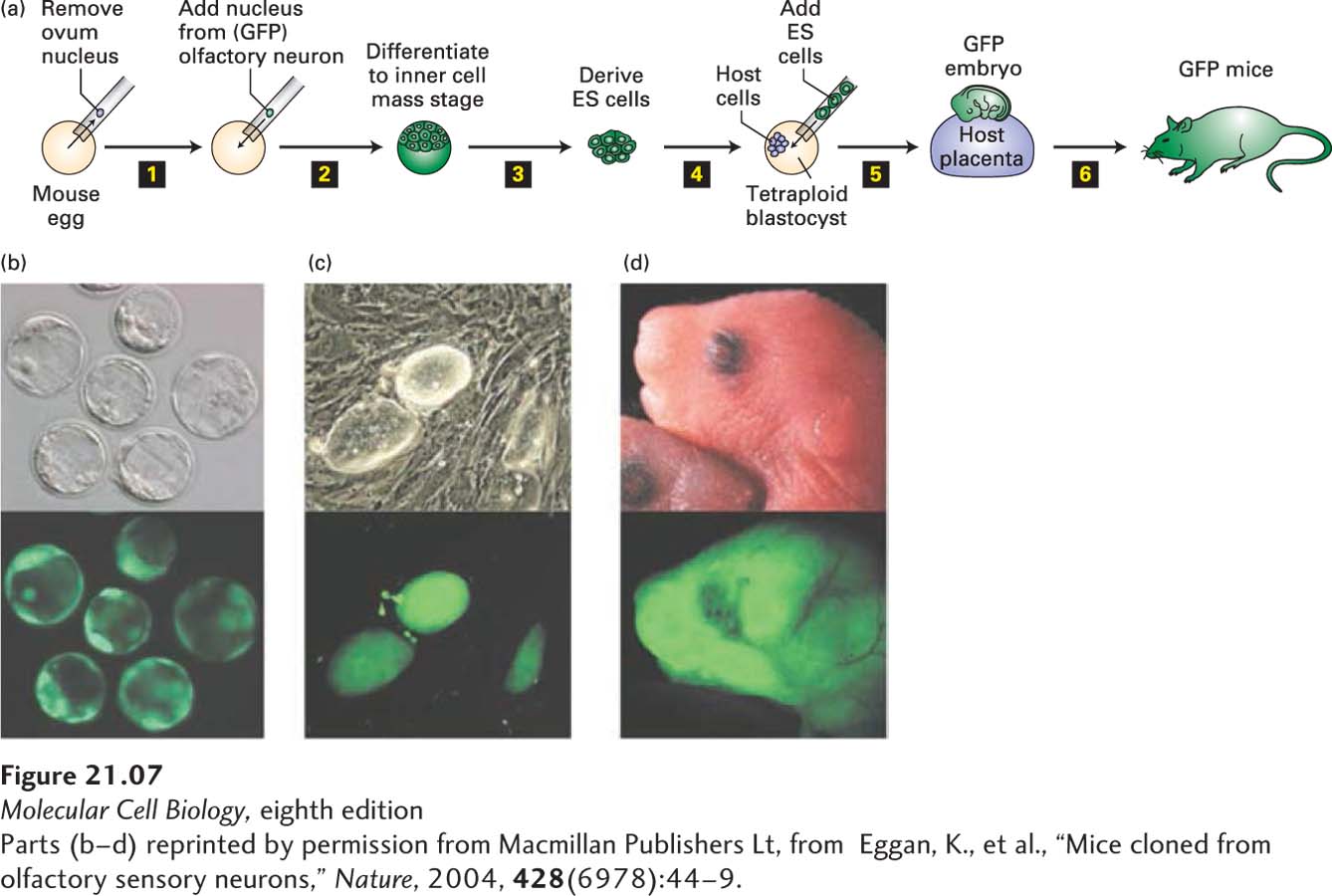
EXPERIMENTAL FIGURE 21- 7 Mice can be cloned by somatic- cell nuclear transfer from olfactory neurons. (a) Procedure for generating cloned ES cell lines using nuclei from olfactory sensory neurons and using them to generate cloned mice. Step 1: A nucleus from an olfactory sensory neuron isolated from a mouse that expressed green fluorescent protein (GFP) only in its olfactory neurons was used to replace the nucleus of a mouse egg, and the resultant zygote was cultured to the blastocyst stage (step 2). The ICM cells, all of which were clones of the original olfactory sensory neuron, and all of which expressed GFP, were used to generate lines of ES cells (step 3). Step 4: These ES cells were injected into a tetraploid blastocyst. Step 5: When the blastocyst was transplanted into the uterus of a pseudopregnant mouse, the tetraploid cells from the host blastocyst could form the placenta (gray), but not the embryo proper; therefore, all of cells in the embryo proper and in the mouse that developed from it expressed GFP (step 6). (b– c) Bright- field (top) and fluorescence images (bottom) of (b) nuclear- transfer blastocysts and (c) the ES cells that were isolated from the ICM. (d) A control 12- hour- old mouse (top) and a mouse cloned from an olfactory sensory neuron, all of whose cells expressed GFP (bottom).
[Parts (b– d) reprinted by permission from Macmillan Publishers Lt, from Eggan, K., et al., “Mice cloned from olfactory sensory neurons,” Nature, 2004, 428(6978):44– 9.]
[Leave] [Close]